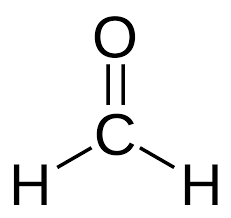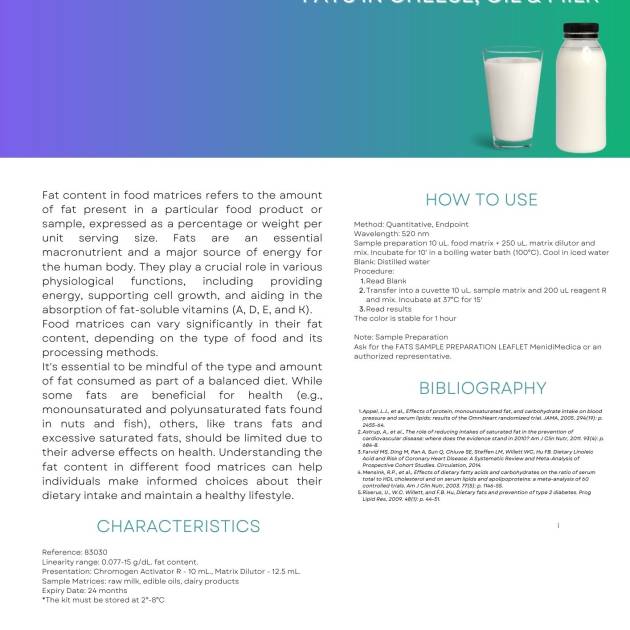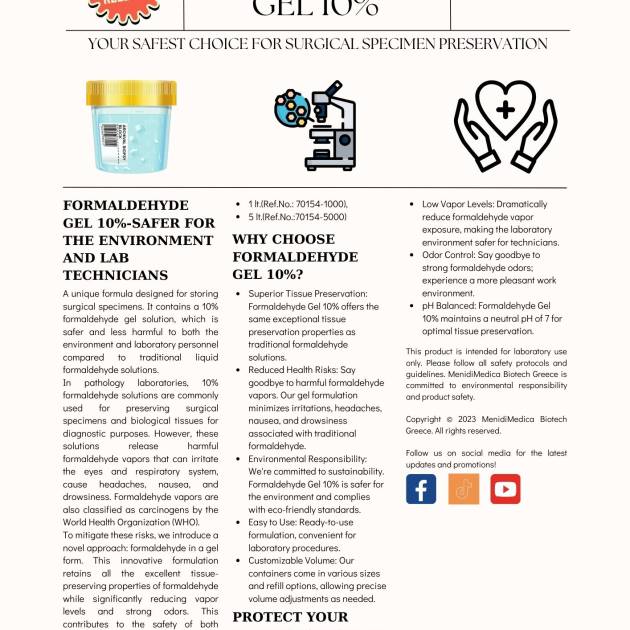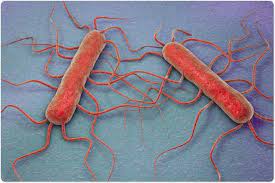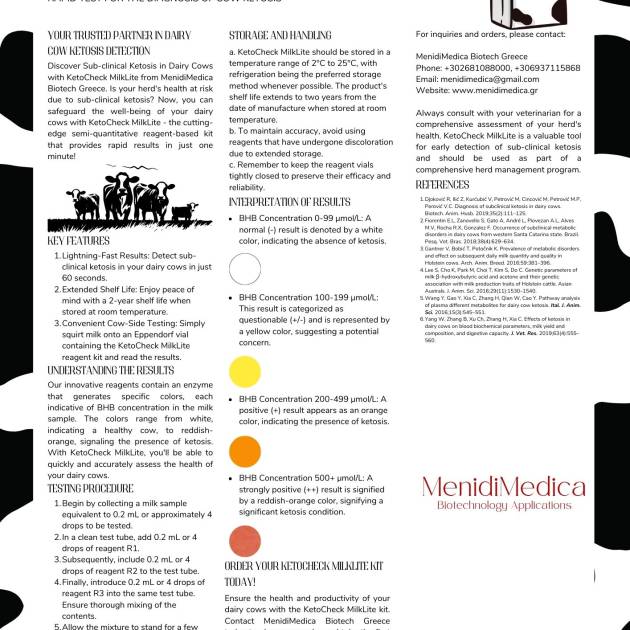Περιγραφή
Formaldehyde Adulteration in fish, food, meat, milk, water
Description
Formaldehyde is the simplest aldehyde. It is widely employed in industry (meat, fruits, fish, water) for wide range of applications, as a disinfectant and is a commonly utilized tissue fixative and embalming agent. Formaldehyde is naturally present in all tissues and body fluids. Recently, it has been shown that some cancer types exhibit elevated formaldehyde levels. Examples of foods known to contain naturally occuring formaldehyde.
Food Type/ Level (ppm-mg/kg)
Apple: 6.3-22.3
Banana: 16.3
Cauliflower: 26.9
Pear: 38.7-60.0
Mushroom (dried/raw): 100-406/6-54.4
Beef, pork, mutton and poultry meat: 2.5-20
Cod: 4.6-34
Fish ball: 6.8
Crustacean: 1-98
Key features
Fast Formaldehyde detection is an ideal kit for the presence of added formaldehyde in food (milk, fish, etc.). The only part that changes in the procedure is the preparation of the sample
Validated – High precise correlation with AOCS Official Method 897.01
Applications – Formaldehyde presence in biological samples, food, water, fish, meat, fruits
Kit contents
R – 2 x 12.5 mL.
Note: Use R with caution, wearing protective gloves.
Necessary equipment (not provided)
Pipette variable volume 100-1000 uL Water bath, peltier plate or incubator
Sample preparation and procedure for milk
1. Add 500 uL. of raw milk in a test tube
2. Add 500 uL. of reagent R in the test tube
3. Mix for 5 seconds
4. Incubate the content in a water bath or peltier plate for 3-5 minutes at 50°C
5. Read the formed colors
Sample preparation and procedure for fish
1. Cut 1 cm3 of raw fish and mince it and place it in a tube
2. Add 5 mL. of distilled water in the tube
3. Mix the suspension
4. Collect 500 uL. of suspension in a test tube
5. Add 500 uL. of reagent R in the test tube
6. Incubate the content in a water bath or peltier plate for 3-5 minutes at 50°C
7. Read the formed colors
*Note: For other food sample preparations, contact MenidiMedica Biotech Greece
Interpretation (for milk)
– Fade pink = Pure food with no added formaldehyde
– Yellow = Adulterated food with formaldehyde (0.025%)
– Green = Adulterated food with formaldehyde (9%)
MSDS is available upon request.


